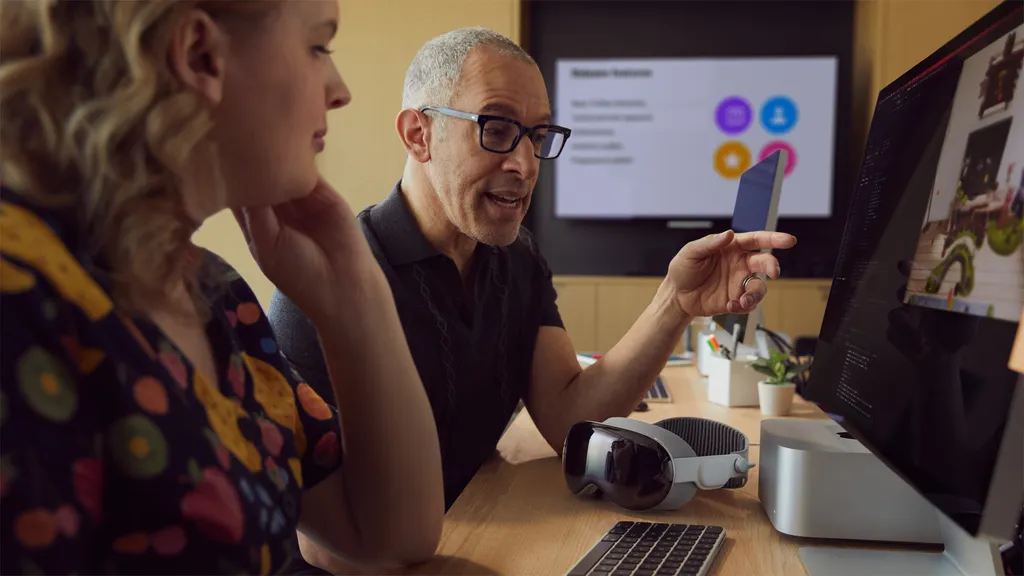Apple released the software development kit for its upcoming visionOS platform that drives the Vision Pro headset.
The new software tools in the SDK for "Apple's first spatial computer" rely on eye, hand and voice input, and Apple says it is accepting applications for developer kits starting next month. In the meantime, the SDK accompanies the release of a new simulation tool in Xcode to preview and prepare content for the upcoming headset.
"Developers can also interact with their apps in the new visionOS simulator to explore and test various room layouts and lighting conditions," a press release from Apple explains. "And every developer framework comes with built-in support for Apple’s innovative accessibility features to ensure spatial computing and visionOS apps are accessible to everyone."
Apple Vision Pro debuts early next year for $3500 and we've already had our first hands-on with the feature-packed design. The SDK release and accompanying human interface guidelines released today offer a deeper look at Apple's upcoming platform. The company says that starting next month developers who've been building 3D apps with Unity can port their work to the headset.
"Next month, Apple will open developer labs in Cupertino, London, Munich, Shanghai, Singapore, and Tokyo to provide developers with hands-on experience to test their apps on Apple Vision Pro hardware and get support from Apple engineers," Apple says.
To build spatial apps for visionOS Apple recommends using its own suite of tools: the Xcode IDE, SwiftUI for user interfaces, the RealityKit framework for rendering, physics, animations, and spatial audio, and ARKit for handling hand tracking, environmental understanding, and more. Apple has even released Reality Composer Pro, essentially its own engine editor.
The new human interface guidelines and best practices revealed alongside the SDK's documentation also make mention of implementing "a virtual reality (VR) game" in the new operating system as well as presenting "a virtual world to explore" -- some of Apple's first references to this type of content coming to visionOS.






























